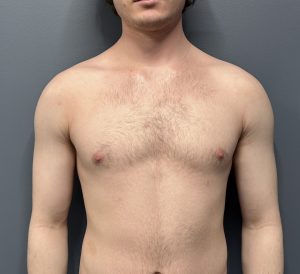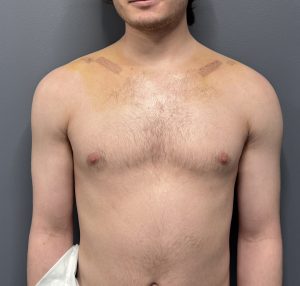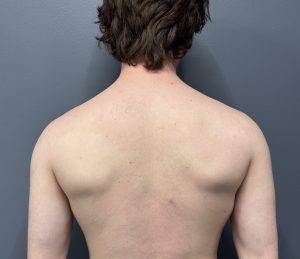Introduction
Shoulder widening, or augmentative shoulder reshaping, can be achieved through two main approaches. The external or direct approach involves augmenting the shoulder’s soft tissues (deltoid muscles) with either implants or fat injections. The internal or indirect approach increases clavicle bone length, thereby broadening the shoulders. Each method has distinct advantages, and in select cases, they may be combined.
Soft tissue augmentation is less invasive, allows for quicker recovery, and carries fewer complications. However, fat graft survival is unpredictable, and patients must have sufficient donor fat. Deltoid implants avoid this issue but carry typical implant-related risks, and some patients may not want foreign materials in their bodies.
Clavicle lengthening is a more anatomic solution, using the patient’s own bone and thus appealing to many. It is considered an indirect technique since the procedure site is not the same as where the aesthetic result is seen. By increasing clavicle length, the shoulders widen, as this horizontal bone defines the distance from the sternum to the arms. While clavicle lengthening has traditionally been performed for congenital defects or malunited fractures, its application in purely aesthetic shoulder widening remains relatively limited.
Although clavicle lengthening is theoretically similar to limb lengthening, the clavicle’s smaller size and high visibility pose challenges. Distraction osteogenesis has been attempted but is hindered by scarring and lack of suitable devices. Osteotomy with interpositional grafting is a more practical alternative, offering shorter recovery and less scarring, though it has its own limitations.
Case Study
A young male patient desired shoulder reshaping via clavicle lengthening. His preoperative anterior “wrap-around” bi-deltoid distance measured 53 cm. The main discussion centered on achievable lengthening, acknowledging restrictions from shoulder soft tissues. A maximum of 1.5–2 cm (15–20 mm per side) was possible, which the patient accepted.


Results
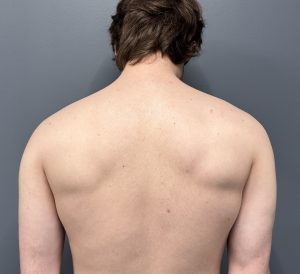
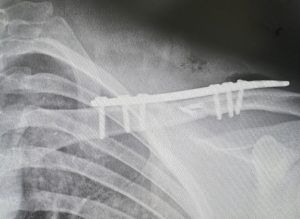
Discussion
Clavicle lengthening differs fundamentally from clavicle shortening, both technically and conceptually. With shortening, the shoulder naturally moves inward as structural support weakens—similar to what occurs in fractures, necessitating fixation to prevent collapse. In contrast, outward expansion is more difficult, as the scapular and humeral soft tissues restrict the clavicle’s ability to push the shoulders outward.
Conclusions
- Clavicle lengthening osteotomy is distinctly different from clavicle shortening in both technique and effectiveness.
- Achievable clavicle lengthening is limited by the soft tissue attachments of the scapula and humerus.
- The sagittal split osteotomy with interpositional grafting reduces the risks of nonunion and poor bony healing.
Barry Eppley, MD, DMD
World-Renowned Plastic Surgeon




